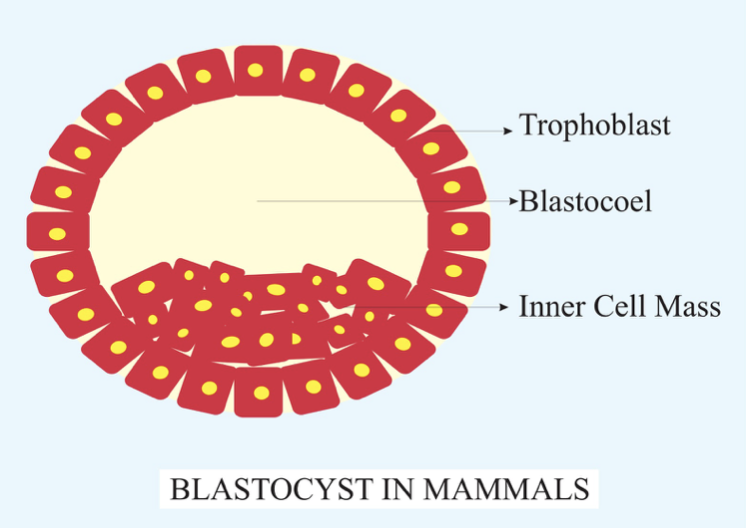Question
Question: Blastocyst is blastula of - (a) Platypus (b) Kangaroo (c) Monkey (d) Both (b) and (c)...
Blastocyst is blastula of -
(a) Platypus
(b) Kangaroo
(c) Monkey
(d) Both (b) and (c)
Solution
A blastocyst is a group of cells that forms during the early development of a viviparous animal while forming the embryo. It is formed after the morula. This structure occurs only in the case of mammals.
Complete answer:
- Blastocyst is a stage of the embryo formed in the early development of mammals. In the rest of the animals, it is known as a blastula. It is a group of cells formed from morula.

- The Platypus is an egg-laying mammal and the kangaroo is a marsupial, hence they do not have a blastocyst. The Monkey is a mammal. Hence, a blastocyst is present in monkeys.
- The blastocyst develops into the gastrula.
Additional Information:
- The blastocyst is formed from the morula. In the morula, a cavity is formed between the cells of the inner cell mass and the enveloping layer which becomes filled with fluid.
- On further differentiation of cells, a thin layer of cells between the inner cell mass and cavity called the hypoblast is formed.
- The enveloping layer of the blastocyst is known as the trophoblast. It is a precursor to the placenta. The inner cell mass forms the embryo.
- The blastocoel is the cavity of the blastocyst.
So, the correct answer is ‘Monkey’.
Note: The difference between blastocyst and blastula is that the blastocyst is composed of two already differentiated cell types, the inner cell mass, and the enveloping layer.
- In humans, the blastocyst forms about five days after fertilization.
- It undergoes implantation and is embedded into the endometrium after approximately seven days after fertilization.
